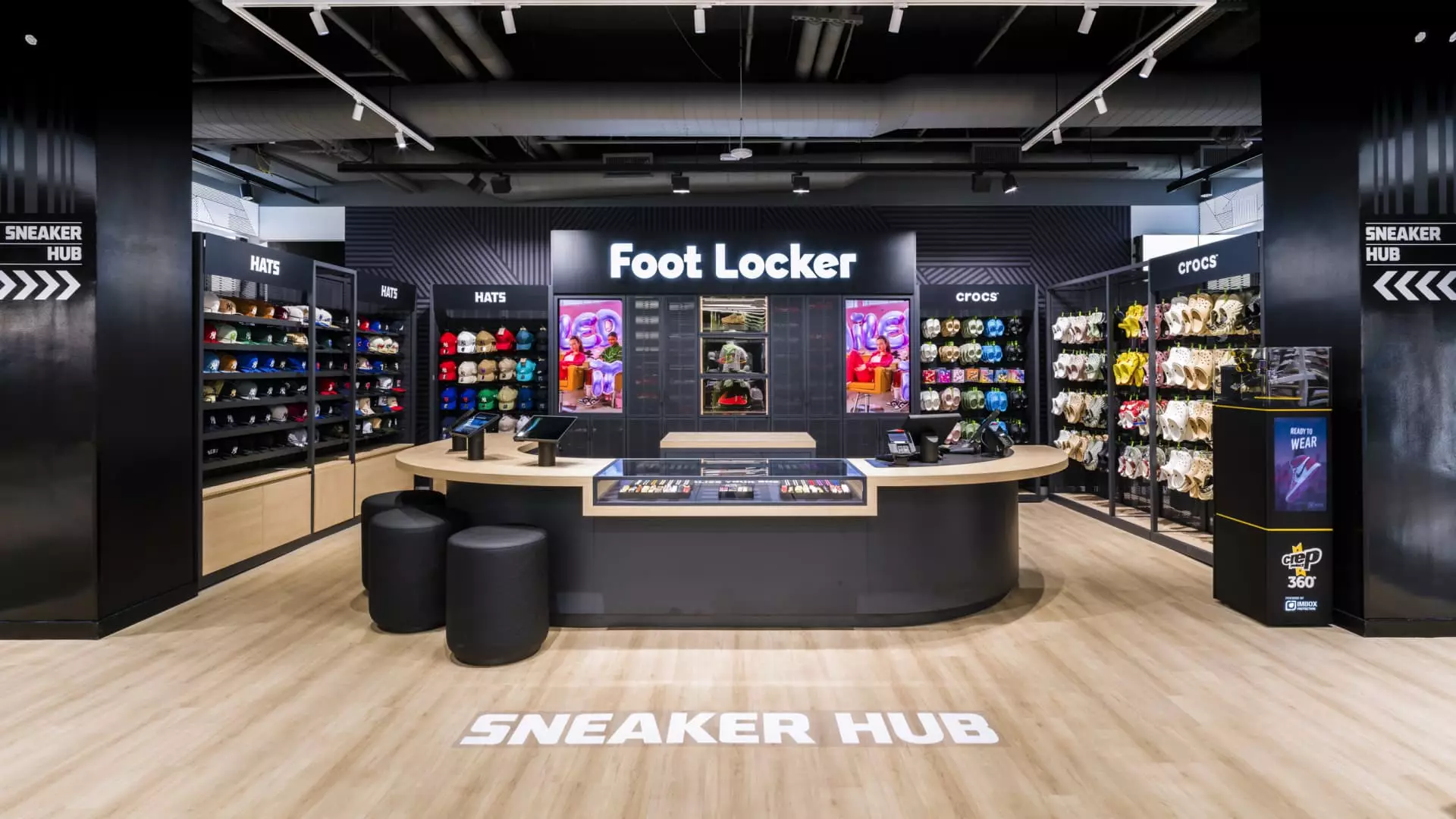The recent turmoil within the sneaker industry paints a bleak picture for major retailers, with Foot Locker at the forefront. The company’s expectations for 2025 suggest a deep reliance on aggressive discounts, primarily due to significant challenges posed by its largest supplier, Nike. This ongoing “reset” strategy at Nike, marked by rampant markdowns to purge inventory, indicates a concerning trend for Foot Locker’s sales model. While Nike attempts to stabilize its brand image amidst declining demand and fluctuating revenue, Foot Locker’s dependence on the sneaker giant—responsible for about 60% of its sales—leaves it in a precarious situation.
The implications of Nike’s transition are sobering. When a major brand like Nike resorts to deep discounts to move older inventory, it disrupts the pricing structure for retailers like Foot Locker. Shoppers now have the power to directly purchase from Nike’s website at lower prices. This forces Foot Locker to reevaluate its strategy while contending with diminishing margins. The irony is stark: as Nike promotes heavily to stimulate sales, it inadvertently curses its own retail partners under the weight of discounts that lower perceived brand value.
The Financial Pipeline Shows Signs of Strain
Despite Foot Locker achieving a notable profit increase from last year’s staggering losses, the anticipated profits for FY 2025 fail to live up to analyst expectations. Forecasts of adjusted earnings per share hovering between $1.35 and $1.65 stand sharply at odds with market expectations of $1.77. While an earnings beat of 86 cents is commendable, the underlying circumstances—decreasing sales figures and a 6% year-on-year revenue drop—paint a less rosy picture. Foot Locker appears to be caught in a tug-of-war between aiming for profitability and confronting marketplace realities that pressurize margins.
An even more concerning aspect lies in their compounding losses across the Asia-Pacific region, where a staggering 14.1% drop in sales has triggered drastic store closures. The decision to pull out of certain European markets, such as Denmark and Norway, showcases the drastic measures Foot Locker is forced to undertake to cope with dwindling sales. Shifting consumer behavior, exacerbated by the rise of direct-to-consumer brands, challenges Foot Locker’s very existence as a multi-brand retailer.
Revamping Strategies Amidst Store Closures
While Foot Locker is refining its brand mix by partnering with trendy newcomers like Hoka and the innovative On Running, it must address a dilapidated store infrastructure that is increasingly out of touch with consumer preferences. The company plans to invest $270 million to update their aging stores, a necessary but ultimately Band-Aid approach to deeper systemic issues. Moreover, with an anticipated 4% decline in physical outlets next year, such changes might feel like rearranging deck chairs on the Titanic, especially as recent performance indicators reveal a mixed bag of results across its diverse brand offerings.
Interestingly, Foot Locker has created pathways for growth by reinvigorating its Champs Sports brand, achieving a respectable 1.8% comparable sales increase. Foot Locker itself outperformed with a 5.5% uptick in comparable sales, but the success was dampened by the underperformance of its WSS brand. Such disparities suggest that while some areas are thriving, others are holding the company back.
Competing in a Fragile Marketplace
Navigating a retail landscape increasingly defined by direct-to-consumer sales and brand consolidation isn’t easy for Foot Locker. CEO Mary Dillon’s acknowledgment of “consumer and category promotional pressures” speaks volumes about the churn in the sneaker ecosystem. While Dillon points to a “Lace Up Plan” that supposedly resonates with consumers and brand partners, the honest truth may be that such strategies will struggle in a market dominated by price and availability.
In a world where consumer loyalty becomes increasingly transactional, Foot Locker battles against a tide that threatens to undermine its value proposition. Shoppers are incentivized to purchase directly from e-commerce platforms at lower prices, putting traditional retailers in a bind. As a center-right liberal observer, it’s worrisome to see how policy changes and economic conditions are swaying consumer spending, potentially aggravating an already fragile retail environment.
By pursuing risky discounting strategies to survive the impending market shake-up, Foot Locker risks alienating customers who may prefer innovators that offer more compelling value. The sneaker industry’s future looks murky, and without insightful recalibrations, Foot Locker may find itself further entangled in a web of challenges, unable to adapt to fast-evolving consumer demands and ever-competitive pricing structures.

